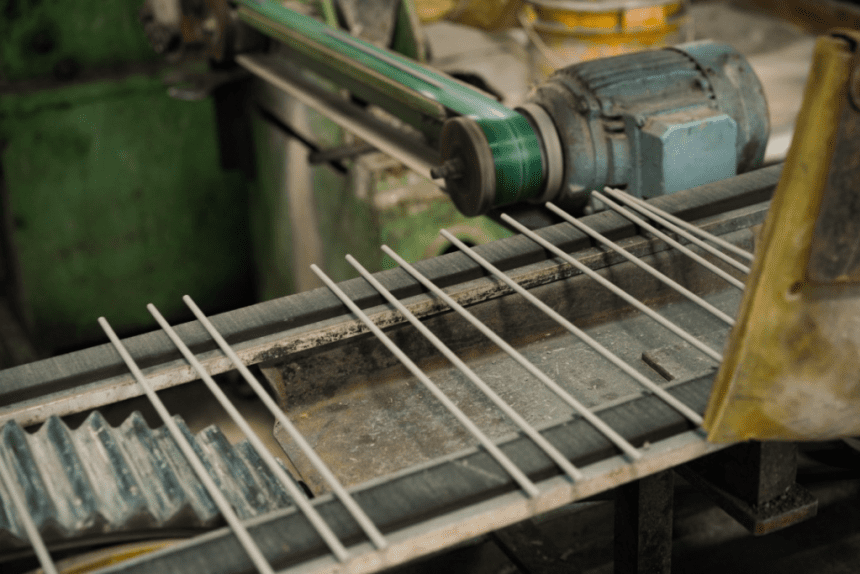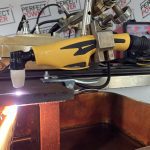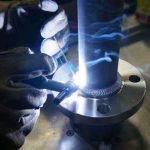Welding is a versatile skill that can open up many opportunities in various industries. Whether you are interested in DIY projects or pursuing a career in metalworking, choosing the right type of welder as a beginner is crucial. With numerous options available in the market, it can be overwhelming to make the right decision. In this article, we will explore different types of welders suitable for beginners and discuss their features, pros, and cons. By the end, you’ll have a clear understanding of the best type of welder for a beginner.
Discover the best type of welder for beginners. Explore stick welding, MIG welding, TIG welding, and flux-cored arc welding. Choose the right welding process for your needs.
Welding Town
Introduction
Before delving into the specific types of welders, it’s essential to understand the basics of welding. Welding is the process of joining two or more metal pieces together using heat and pressure. It requires a heat source, a filler material, and protective gear to ensure safety.
Stick Welder
Heading: Stick Welder: Versatile and Affordable Option
The stick welder, also known as Shielded Metal Arc Welding (SMAW), is one of the oldest and most popular welding processes. It utilizes a consumable electrode coated in flux, which creates a protective gas shield during the welding process. Stick welding is relatively simple and versatile, making it a suitable choice for beginners.
Pros of Stick Welder:
- Affordable equipment and consumables
- Suitable for outdoor and windy conditions
- Can weld various metals, including steel, stainless steel, and cast iron
Cons of Stick Welder:
- Requires more skill and practice to achieve high-quality welds
- Limited control over heat input and welding speed
- Produces more spatter and slag compared to other processes
MIG Welder
Heading: MIG Welder: Easy and Efficient Welding
MIG (Metal Inert Gas) welding is a widely used process known for its ease of use and high welding speed. It utilizes a continuous wire electrode fed through a welding gun, along with a shielding gas that protects the weld from contamination. MIG welding is suitable for beginners due to its simplicity and versatility.
Pros of MIG Welder:
- Easy to learn and use, ideal for beginners
- High welding speed and efficiency
- Can weld a variety of materials, including steel, stainless steel, and aluminum
Cons of MIG Welder:
- Requires a constant supply of shielding gas
- Limited effectiveness in windy or outdoor conditions
- Higher initial setup cost compared to stick welding
TIG Welder
Heading: TIG Welder: Precision and Control
TIG (Tungsten Inert Gas) welding is a precise and versatile process that produces high-quality welds. It uses a non-consumable tungsten electrode to create the arc and requires a separate filler material. TIG welding offers excellent control over the welding parameters, making it suitable for intricate and detailed work.
Pros of TIG Welder:
- Provides precise control over heat input and welding speed
- Produces clean and aesthetically pleasing welds
- Suitable for welding various metals, including stainless steel, aluminum, and copper
Cons of TIG Welder:
- Requires advanced skills and practice to master
- Slower welding speed compared to other processes
- Higher cost of equipment and consumables
Flux-Cored Arc Welder
Heading: Flux-Cored Arc Welder: Versatility and Portability
Flux-Cored Arc Welding (FCAW) is a welding process similar to MIG welding but uses a tubular wire filled with flux instead of a solid wire. It combines the convenience of MIG welding with the versatility of stick welding, making it suitable for beginners who need portability and versatility.
Pros of Flux-Cored Arc Welder:
- Provides good penetration and high deposition rates
- Suitable for welding thick materials
- Works well in outdoor and windy conditions
Cons of Flux-Cored Arc Welder:
- Produces more smoke and fumes compared to other processes
- Requires proper ventilation due to the release of flux-cored gases
- Limited control over welding parameters compared to TIG welding
Comparison of Welding Processes
Heading: Comparison of Welding Processes for Beginners
Here is a comparison table highlighting the key features of each welding process:
| Welding Process | Ease of Use | Versatility | Weld Quality | Initial Cost |
|---|---|---|---|---|
| Stick Welding | Medium | High | Fair | Low |
| MIG Welding | High | High | Good | Medium |
| TIG Welding | Low | High | Excellent | High |
| FCAW | High | High | Good | Medium |
Factors to Consider for Beginners
Heading: Factors to Consider When Choosing a Welder
When selecting the best type of welder as a beginner, consider the following factors:
- Budget: Determine how much you can invest in welding equipment and consumables.
- Project Requirements: Identify the materials you will be welding and the thickness of the metal.
- Skill Level: Assess your current welding skills and willingness to learn new techniques.
- Ease of Use: Consider the learning curve and simplicity of the welding process.
- Future Growth: Evaluate whether you plan to pursue welding as a hobby or a professional career.
Safety Precautions
Heading: Safety Precautions for Welding Beginners
Welding involves potential hazards, so it’s crucial to prioritize safety. Follow these safety precautions when welding:
- Wear appropriate protective gear, including a welding helmet, gloves, and safety glasses.
- Ensure proper ventilation in the welding area to prevent the accumulation of fumes.
- Keep a fire extinguisher nearby to tackle any fire emergencies.
- Inspect welding equipment regularly for any defects or malfunctions.
- Learn proper welding techniques and seek guidance from experienced welders.
Tips for Getting Started
Heading: Tips for Beginners Starting Their Welding Journey
Here are some valuable tips to help beginners get started with welding:
- Enroll in a welding course or seek guidance from experienced welders.
- Practice on scrap metal before working on actual projects.
- Invest in a quality welding helmet with proper eye protection.
- Experiment with different welding techniques to broaden your skillset.
- Join welding communities or forums to exchange knowledge and tips with fellow enthusiasts.
Conclusion
In conclusion, the best type of welder for a beginner depends on various factors such as budget, project requirements, and skill level. Stick welding offers versatility and affordability, while MIG welding provides ease of use and efficiency. TIG welding offers precision and control, and flux-cored arc welding combines portability with versatility. Consider your specific needs and preferences before making a decision. Remember to prioritize safety and continuously improve your skills through practice and learning.
FAQs
- Can I use a TIG welder for all types of metals? TIG welders can work with various metals, including stainless steel, aluminum, and copper. However, some metals may require specialized techniques and additional equipment.
- Is stick welding suitable for outdoor projects? Yes, stick welding is suitable for outdoor projects as it is less affected by wind and external conditions compared to other processes.
- Do I need a separate shielding gas for flux-cored arc welding? No, flux-cored arc welding uses a flux-filled wire that creates its shielding gas, eliminating the need for a separate gas supply.
- How long does it take to become proficient in welding? Becoming proficient in welding depends on individual dedication, practice, and learning. It can take several months to years to develop advanced welding skills.
- Where can I find welding resources and tutorials? You can find welding resources, tutorials, and forums online or consider joining local welding associations or vocational schools for comprehensive training.











